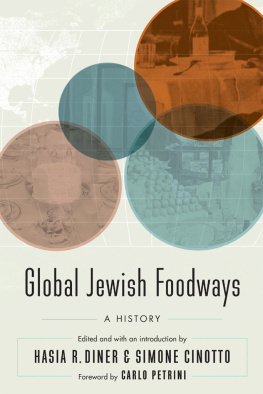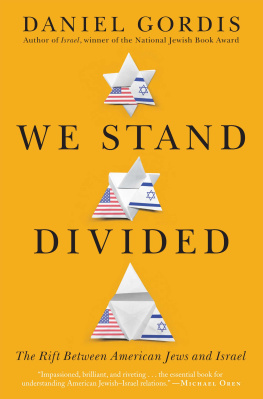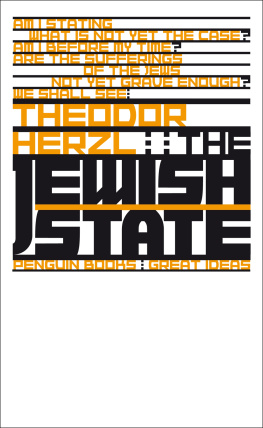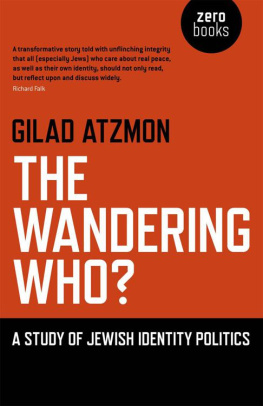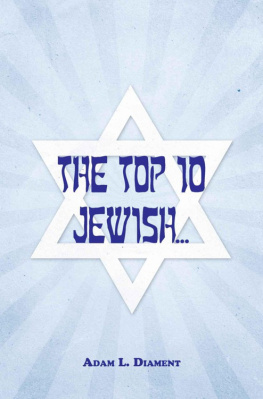1929
THE GOLDSTEIN-GOREN SERIES IN AMERICAN JEWISH HISTORY
GENERAL EDITOR: HASIA R. DINER
We Remember with
Reverence and Love
American Jews and the Myth
of Silence after the Holocaust,
19451962
HASIA R. DINER
Is Diss a System?
A Milt Gross Comic Reader
EDITED BY ARI Y. KELMAN
All Together Different
Yiddish Socialists, Garment
Workers, and the Labor Roots
of Multiculturalism
DANIEL KATZ
Jews and Booze
Becoming American in the
Age of Prohibition
MARNI DAVIS
Jewish Radicals
A Documentary History
TONY MICHELS
1929
Mapping the Jewish World
EDITED BY HASIA R. DINER
AND GENNADY ESTRAIKH
1929
Mapping the Jewish World
Edited by
HASIA R. DINER AND GENNADY ESTRAIKH

NEW YORK UNIVERSITY PRESS
New York and London
www.nyupress.org
2013 by New York University
All rights reserved
References to Internet Websites (URLs) were accurate at the time of writing. Neither the author nor New York University Press is responsible for URLs that may have expired or changed since the manuscript was prepared.
LIBRARY OF CONGRESS CATALOGING-IN-PUBLICATION DATA 1929 : mapping the Jewish world / edited by Hasia R. Diner and Gennady Estraikh. pages ; cm(The Goldstein-Goren series in American Jewish history)
Includes bibliographical references and index.
ISBN 978-0-8147-2020-2 (cloth : alk. paper)ISBN 978-0-8147-2021-9 (pbk. : alk. paper) 1. Jew United States History 20th century. 2. Jew History 20th century. 3. Jews United States Politics and government 20th century. 4. Jews Politics and government 20th century. 5. Jews United States Intellectual life 20th century. 6. Jews Intellectual life 20th century. 7. Jews United States Social life and customs 20th century. 8. Jews Social life and customs 20th century. 9. Jews United States Charities. History 20th century. 10. Jews Migrations History 20th century. I. Diner, Hasia R., editor. II. Estraikh, G. (Gennady), editor. III. Title: Nineteen twenty nine.
E184.354.A14 2013
973.04924 dc23 2013006920
New York University Press books are printed on acid-free paper, and their binding materials are chosen for strength and durability. We strive to use environmentally responsible suppliers and materials to the greatest extent possible in publishing our books.
Manufactured in the United States of America
c 10 9 8 7 6 5 4 3 2 1
p 10 9 8 7 6 5 4 3 2 1
Contents
HASIA R. DINER AND GENNADY ESTRAIKH
HASIA R. DINER
DAVID ENGEL
GENNADY ESTRAIKH
TOBIAS BRINKMANN
REBECCA KOBRIN
RAKEFET ZALASHIK
HENRY SREBRNIK
AVNER BEN-ZAKEN
ERIC L. GOLDSTEIN
JEFFREY LESSER
GABRIELLA SAFRAN
GLENDA ABRAMSON
JOSEPH SHERMAN
MIKHAIL KRUTIKOV
Introduction
HASIA R. DINER AND GENNADY ESTRAIKH
Conventional thinking about Jewish history has pivoted around a number of key dates, going from 70 CE with the destruction of the Temple in Jerusalem by the Romans to 1492 and the expulsion from Spain. Most commentators would agree that 1881 with the outbreak of the pogroms in the Czarist empire, 1933 and the rise of Adolf Hitler to power, and finally 1948 and the declaration of the State of Israel as a sovereign Jewish state constitute the key years from which to imagine the flow of Jewish historical time. Many also regard 1967 as a dividing line, as the June War changed tangibly the international image and situation of Israel, stimulated new interpretations of history, and triggered the Jewish emigration from the Soviet Union.
But since Jewish history cannot, and ought not, be divorced from the larger history of the world, other dates also suggest themselves as possible moments which can provide a framework for understanding the Jewish past. 1096 and the launch of the First Crusade, 1516 when Martin Luther ripped apart the unity of Christendom, and the French Revolution of 1789, which offered citizenship to all men, divorcing the benefits offered by the state from religious affiliation, offer a few other dates drawn from world history which could be considered as transformative of Jewish life and worthy of exploration.
1929, the subject of this volume, proved to be a watershed in modern Jewish history. The reaction of Jewish communities, organizations, and individuals to the dramatic events of that year was determined by, particularly, although not limited to, the great crisis of the world economy ushered in by the crash of the stock market. The developments of 1929 as they played out in the Jewish world reflected the reality that changes, for better or worse, in the larger society impacted upon the Jews. Jews in the modern world, or the premodern world for that matter, never lived in splendid isolation from others. Their internal communal practices, their relationships with each other, and the bonds they forged with non-Jews took their shape as much from the issues and events of the larger society as they reflected Jewish concerns and consciousness. Additionally, 1929 offers a clear example of the transnational connections which linked Jews to each other, regardless of where they lived.
While Jews functioned as American Jews, Russianor, better, SovietJews, German Jews, Palestinian Jews, Polish Jews, and the like, they behaved politically in a global context. They understood their fates to be tied up with each other despite the fact that each Jewish community had a particular bundle of political, social, and economic rights, based on place of residence. Each had to react to and interact with the particularities of their specific societies. Yet each Jewry took the worldwide condition of the Jewish people to be a matter of grave concern. 1929 proved to a year when Jews, regardless of where they lived, saw themselves as affected by developments that took place far away. No matter how far away, the crises endured by other Jews became part of a transnational Jewish consciousness.
As the historians and literary scholars whose essays make up this book engage with so many other watershed dates, they have taken 1929 as more that just a singular year. But they contemplate it as a key moment in time from which to assess the trends set in motion in the decade that preceded it and in the immediate period of time which followed. As such, they have not limited themselves to the events of only that one year. Rather, 1929 provides this book with a vantage point from which to survey and analyze the revolutions in Jewish life, set in place by developments in the postWorld War I world, as they shaped Jewish intellectual, political, and communal conditions. 1929 likewise provides a lens from which to contemplate the changes which that year brought about, some of which left indelible marks on the history of the Jewish people.
In 1929, the world Jewish population hovered at just a bit over 17 million, a striking figure retrospectively, given that in less than ten years, political forces would be unleashed in Germany which would annihilate one-third of them, and in fewer than twenty years, the image of the six million Jewish victims of the Holocaust would dominate Jewish thinking and political action. That, however, lay in the future. In 1929, over 7 million of the Jewish people lived in central and eastern Europe, including Poland, Russia, Austria, Czechoslovakia, Hungary, Latvia, and Lithuania, where they constituted about 6 percent of the total population. 300,000, on the other hand, made their home in the Jews ancestral homeland, Palestine. Almost 5 million Jews lived in the Americas, north and south, with the lions share of over 4 million in the United States. While eastern Europe, across national boundaries, represented the single largest concentration of Jews anywhere, the United States had the largest single Jewish community in any one country.
Next page






